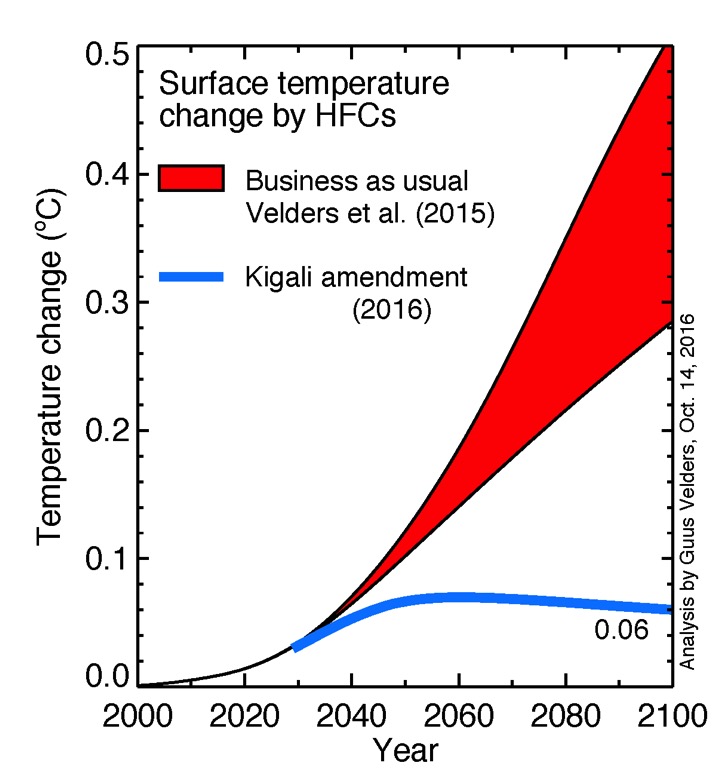Levels of supposedly banned greenhouse gas are spiking

Everybody promised to destroy HFC-23 but apparently they didn’t.
Remember the hole in the ozone layer? Last year it was smaller than it has been since they started measuring it. Because of the 1987 Montreal Protocol, however, 98 percent of ozone-depleting substances were taken off the market and replaced with hydrofluorocarbons, or HFCs, which don’t deplete the ozone layer but are serious greenhouse gases; a ton of HFC-23 has the same effect as 11,700 tons of carbon dioxide.
In 2016 the Kigali Amendment to the Montreal Protocol was agreed to and has been ratified by 65 countries; it aims to eliminate HFCs. Many countries promised to eliminate HFC-23 by 2017 but a new study shows that, in fact, emissions have spiked. According to Dr. Matt Rigby of the University of Bristol,
“This potent greenhouse gas has been growing rapidly in the atmosphere for decades now, and these reports suggested that the rise should have almost completely stopped in the space of two or three years. This would have been a big win for climate.”
It’s apparently mostly coming from China and India, as an unwanted byproduct from the manufacture of Teflon, and also the manufacture of R-22, a refrigerant in air conditioners that is also supposed to be on the way out. It is used as a refrigerant and in the manufacture of semiconductors.
India promised back in 2016 that its manufacturers would collect and destroy all the HFC-23 in the country. People were enthusiastic at the time, noting, “This step also improves chances at the Montreal Protocol this week to agree to a global phase-down of HFCs, which could reduce global warming by 0.5 degrees.”
But not so fast, says lead author of the study, Dr Kieran Stanley.
To be compliant with the Kigali Amendment to the Montreal Protocol, countries who have ratified the agreement are required to destroy HFC-23 as far as possible…. Our study finds that it is very likely that China has not been as successful in reducing HFC-23 emissions as reported. However, without additional measurements, we can’t be sure whether India has been able to implement its abatement programme.
As of January 1, 2020, the production and import of R-22 is illegal in many countries including the USA and China. One would think that this would also mean the end of HFC-23. Perhaps someone is cheating…
Everybody promised to destroy HFC-23 but apparently they didn’t.
Please enable JavaScript to view the comments.







